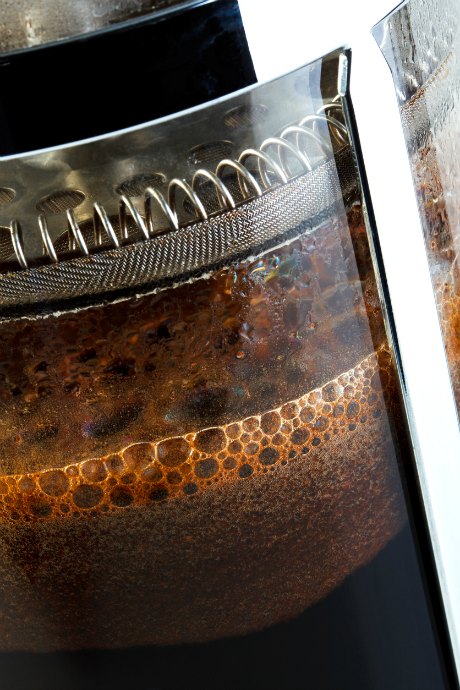More Control With French Press Coffee
Posted by Julie on Jan 16th 2017
It's no secret we love coffee. From traditional drip coffee to foamy lattes and flash brew coffee, we couldn't make it through the day without a cup.
Another brewing method we love is French press. French press coffee requires more attention than drip, but you can also control the flavor and strength of your brew better with a French press than a drip coffeemaker.
Check out the tips and tricks we found for making the best French press coffee, along with product recommendations to help ensure your brew turns out perfectly.
French Press Coffee: The Right Grind
When brewing with a French press, grind whole coffee beans using a burr grinder. A burr grinder is more expensive than a blade grinder, but the cost is worth the results. A blade grinder merely chops the beans, whereas a burr grinder truly grinds them. This photo on Coffee Detective shows the inner components of a burr grinder.
A burr grinder offers a range of grind settings and delivers consistently-sized ground beans. Many burr grinders even have a "French press" setting, which will automatically grind the beans to the optimal size for French press brewing.
If you already have a blade grinder, you can try to replicate burr grinder results using this method from The Kitchn: Pulse your blade grinder instead of pressing steadily, and stop every few seconds to turn it upside down and redistribute the beans.
Well-known coffee company illy recommends a medium grind for French press brewing. If the beans are ground too fine, they will seep through the filter and create sediment in your coffee. If the beans are ground too coarse, they can clog the filter. This may prevent you from pouring all the coffee out of the press once it has finished steeping.
Still not sure what your grind should look like? These comparison photos from Anchor Roasting are a helpful illustration, not just for French press coffee but other types of brewing too.

French Press Coffee: The Right Temperature
The National Coffee Association recommends brewing with water at a temperature between 195°F to 205°F. Too hot, and your coffee will taste bitter. Too cold, and your coffee will taste bland.
Ideal water temperature is related to grind size. For a finer grind, water closer to 195°F is better. For a coarser grind, water closer to 205°F is better.
You don't even need a thermometer. Gauge the temperature by bringing water to a rolling boil, and then take it off the heat. After 30 seconds, your water will be around 205°F. After a full minute, your water will be around 195°F. But if you want to be precise, by all means use a thermometer.
French Press Coffee: The Right Time
Brewing with a French press means steeping the ground coffee beans in hot water. We've already covered the grind and the water temperature, but how long should you steep?
Various sources recommend a broad range of steeping times. The National Coffee Association says 2-4 minutes. Craft Coffee says 4 minutes, which includes the "bloom," where half the water is poured over the beans and allowed to sit for 30 seconds. Then stir briefly and pour in the rest of the water. Stumptown Coffee Roasters agrees, except the bloom should sit for a full minute. The Kitchn also recommends 4 minutes, but doesn't mention blooming or stirring. Serious Eats says 6-8 minutes, but they specify a coarse grind.
Bottom line: Use the above guidelines as a starting point, but you'll have to experiment to find what tastes best to you!
French Press Coffee: The Right Equipment
If you're a coffee lover and you don't yet have a burr grinder, now's the time to treat yourself. Not only will a burr grinder produce better results for drip coffee and espresso, it's essential to brewing good French press coffee.
We also recommend a tea kettle to boil water and pour it easily. Choose from a stovetop kettle, or an electric kettle that offers a range of preset temperatures.
As for the French press itself, we carry a variety of options, including ceramic, stoneware, and insulated stainless steel.

